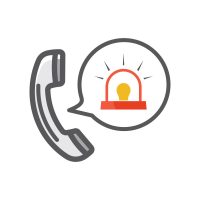
Experts in the areas of nuclear and radiological emergencies convened at an International Atomic Energy Agency (IAEA) symposium this week to discuss ways to communicate during such emergencies effectively.
“Communication is a challenge that we all face together,” Juan Carlos Lentijo, deputy director general and head of the Department of Nuclear Safety and Security, said at the IAEA International Symposium on Communicating Nuclear and Radiological Emergencies to the Public, held in Vienna. “The goal for us all is to communicate effectively with the public, so that they understand what is happening, do not panic and follow instructions issued by authorities.”
The symposium, the first of its kind, brought together some 400 experts and emergency preparedness practitioners from 74 countries and 13 international organizations, as well as representatives from the media, non-governmental organizations, and academia.
Sessions covered Emergency Preparedness and Response (EPR), stakeholder engagement, public communication channels, and tools in emergencies, social media, effective communication, psychology of communication, coordination of information, communicating in different types of emergencies, lessons learned, and the future of communication.
The experts agreed that producing the right message and disseminating it to the appropriate audience is critical to minimize fear. Further, they concurred that technical experts are viewed as the most reliable source of information when such events occur. Communicators also must learn to balance the need for speed with accuracy.
“If there are information vacuums, they will be filled by misinformation and disinformation,” Peter Rickwood, journalist and founder of Atomic Reporters, said during a panel discussion with representatives from the media.
They also talked about the need to monitor and utilize social media during crisis situations.
Natalia Martínez, a communication adviser for the Nuclear Safety Council in Spain, said that the primary tool of “citizen journalism” is social media.
Participants in the session encouraged communicators to look for social media accounts – particularly on Twitter — that help spread the message. They also encouraged them to develop a social media strategy to monitor the public’s concerns.
“We have to ‘listen’ before we ‘talk,’ and social media help us to know what people are thinking and what their fears are during an emergency,” Martínez said.




